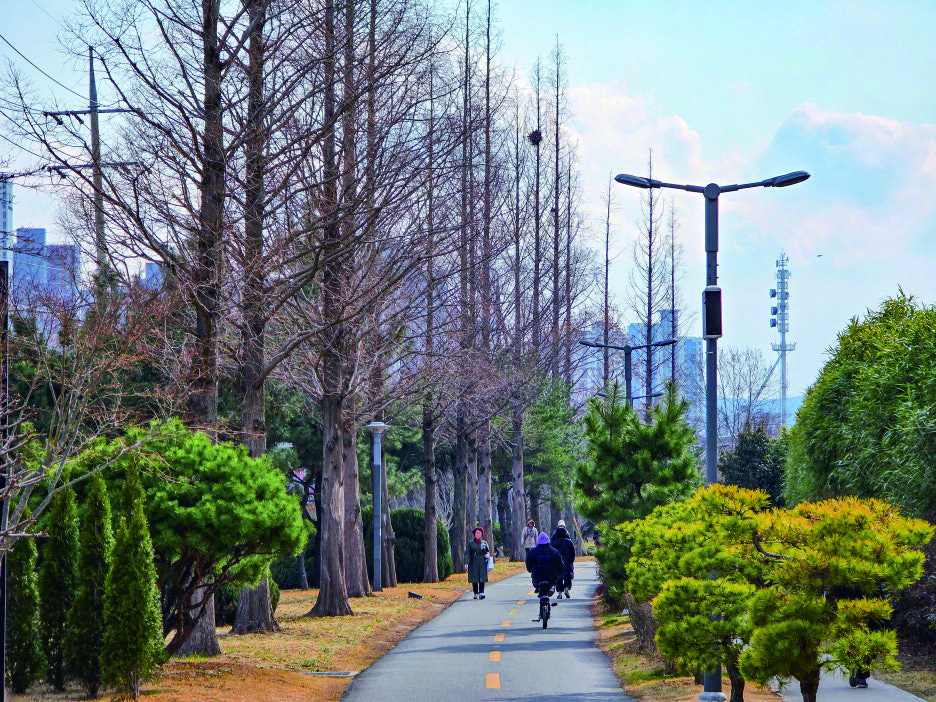
What comes to mind when you think about Pohang City? Many people would mention tourist attractions related to the East Sea, such as Homigot, cruise ships, beaches, and seafood. While Pohang is adjacent to the East Sea, with its various attractions, the city has recently taken on new projects to create a better place to live.
In response to Korea’s 2050 carbon neutrality ambitions and the global climate crisis, the city has been expanding and developing urban forests, which provide clean air and a resting space for citizens tired from their daily lives. Pohang is striving to make it a “city where people want to walk.”
The representative urban forest of Pohang is the “Pohang Railroad Forest.” It was established in 2019 in the section connecting Uhyeon-dong in Buk-gu district, and Yeonil-eup in Nam-gu district. When the railroad, that originally passed through downtown Pohang closed in 2015, the 9.3 km-long site was left unused. To utilize the space, Pohang City planted about 280,000 trees including 180 different species and installed various sculptures to entertain its citizens.
Approximately 28,000 people visit the park daily, and the increase in traffic has led to over 400 billion KRW in consumption in local small businesses.
The excellence of Pohang Railroad Forest has been internationally recognized. It was the first in East Asia to receive the British Green Flag Award and was also awarded UN-Habitat’s Asian Townscape Award, being recognized for its global value.
Five urban forests in Pohang, including the Pohang Railroad Forest, have been approved by the Ministry of Agriculture, Food and Rural Affairs for the greenhouse gas emissions trading system. The urban forests have been recognized for reducing greenhouse gases by 88 tons per year and a total of 2,640 tons over the next 30 years. Pohang City expects that in addition to reducing fine dust, it will generate additional revenue by selling greenhouse gas emissions to companies.
In addition to the Pohang Railroad Forest, 25,300 square meters of urban forest are currently being developed and monitored near the gateway area between Pohang and Gyeongju. This location has various facilities such as a metasequoia forest path, a barefoot forest path, and a sports center. In addition, there are other urban forests in various places such as Jigok-dong, Uhyeon-dong, and Yeonam-dong.
Moreover, Pohang City is not only creating urban forests but is also making efforts to provide forest welfare services. For example, at the Jungmyeong Ecological Park in Yeonil-eup, Nam-gu, and the Erosion Control Memorial Park in Heunghae-eup, Buk-gu, forest interpretation programs offer visitors educational opportunities to understand the importance of forests. At Naeyeonsan Mountain Healing Forest in Songna-myeon, Buk-gu, forest healing programs are available to promote psychological stability and strengthen immunity. With a variety of programs, urban forests in Pohang provide a great retreat for Postechians looking for a break from their studies.


